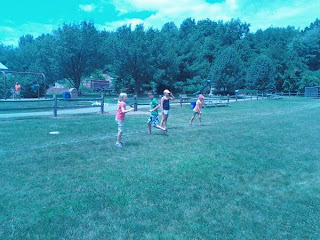BG will also serve as an ambassador to all wild box turtles. If you see a box turtle in the wild, never take it home! BG was bred in captivity.
Here is some information on Eastern Box Turtles from Davidson College:
Eastern box turtles are amazingly versatile animals and inhabit a wide variety of habitats from wooded swamps to dry, grassy fields. Although these turtles can live in a variety of different habitats, they are most abundant and healthy in moist forested areas with plenty of underbrush. Although not aquatic, box turtles will often venture into shallow water at the edge of ponds or streams or in puddles. Box turtles do not travel far, usually living within an area less than 200m in diameter. In cold climates they hibernate through the winter in loose soil at a depth of up to two feet.
Box turtles are omnivores in the broadest sense of the word. They will eat almost anything, animal or plant, that they can fit in their mouth. Intriguingly, it is thought that young box turtles are primarily carnivorous and that as they grow their diet shifts more and more towards plant material. Favorite foods include almost any insect (although they seem to particularly relish worms and slugs), virtually any fruit or berry, mushrooms, a variety of vegetable matter, and even carrion. Interestingly, box turtles are even able to eat many mushrooms that are toxic to humans.
Although box turtles are still fairly common over much of their range, their future is uncertain. Box turtles are slow growing, have few young, and have exhibited delayed sexual maturity. These qualities make them particularly susceptible to damage due to human activities. First and foremost among problems faced by box turtles is habitat destruction and fragmentation. Fragmentation is defined as the process by which natural or seminatural habitats are seperatated from similar habitats by land that is used by humans. As areas of suitable habitat become fewer and farther between, box turtle populations will decline and individual populations will become increasingly vulnerable to extinction. Confined to smaller areas, the turtles will have an increasingly difficult time finding food or mates. These small, isolated populations may suffer from inbreeding and other genetic problems. Box turtles may also wander out of their isolated habitats into the matrix (the land used by humans), where they are particularly susceptible to accidental death due to humans. Each year countless box turtles are hit by cars or trains when they attempt to cross roads or railroads. Others are accidentally killed by lawn mowers, tractors, and farm equipment.
Another concern is the capture of box turtles for the pet trade. The impact of taking turtles from the wild can be devastating to local populations. Over the span of their lifetime, female turtles will lay hundreds of eggs, but only 2-3 of these offspring will survive to adulthood. These offspring will eventually replace their elderly parents, allowing the population to remain at a stable size . But, if box turtles are taken from the wild to become pets, or are killed by human activities, they are removed from the overall breeding population, the number of offspring drops, and the overall population declines. Additionally, box turtles have a homing instinct that causes them to try to return to the place of their birth if they are moved. As a result, when box turtles that have been taken as pets are returned to the wild, they will head straight for their natal grounds. This journey causes the turtles to encounter many dangers, such as roads, predators, and humans. For these reasons, if you are looking for a pet, you should try to find a captive-bred animal or consider a different pet. (Davidson College http://www.bio.davidson.edu/people/midorcas/research/Contribute/box%20turtle/boxinfo.htm)

















































